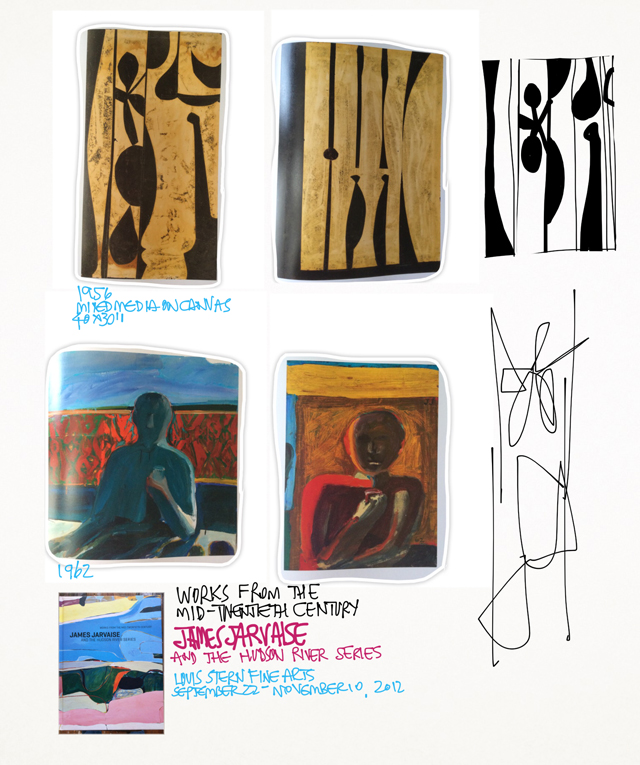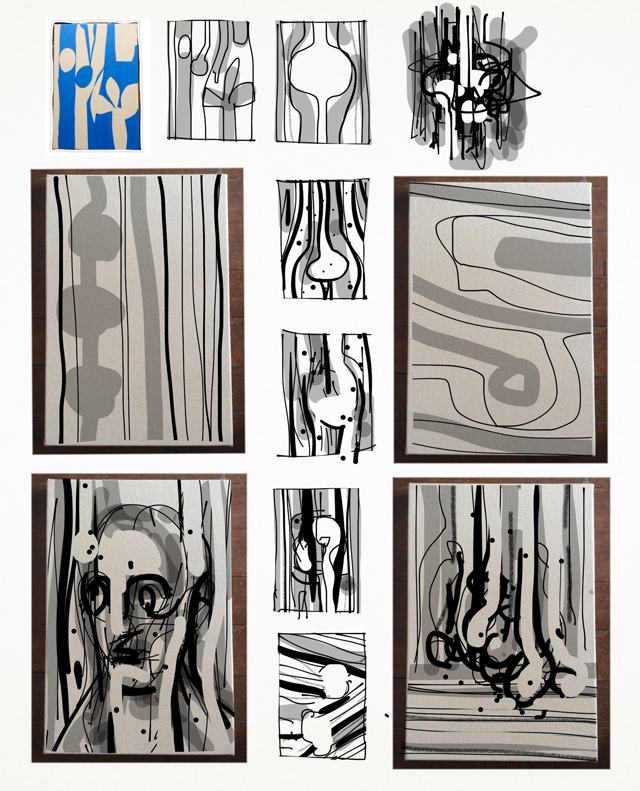May 24, 2014
James Jarvaise


When I was visiting LA at the beginning of the month to celebrate the opening of Michael Kohn's new gallery space/building, Henry Taylor invited me to stay at his place that week. Henry is a gracious host, he's very social and a stream of stories could be told about my time there, but one shines particularly bright. Henry was eager to talk about his first art professor back in the day when he was in community college, James Jarvaise.
Like most artists, Henry started drawing and painting early as a kid, gauging himself at that time by the skill set -set by his childhood friends the Hernandes Brothers. He found work in his twenties as a hospital orderly at Camarillo State Mental Hospital, taking classes in art at night. Jarvaise was the guy who introduced Henry to modern and contemporary art, dropping names such as Georg Baselitz and Max Beckmann to him for the first time. Jarvaise widened his horizons, finally insisting that Henry enroll into CalArts, which was the smartest advice, street-wise, that a mentor could bestow to his charge.

Henry showed me a catalog of an exhibition called 16 Americans, curated by Dorothy C. Miller that benchmarked Jarvaise into the company of artists that included Jay de Feo, Jasper Johns, Ellsworth Kelly, Alfred Leslie, Louise Nevelson, Robert Rauchenberg, Frank Stella... (If you haven't done so already, be sure to click the link to Miller's obituary above, it's quite a portrait of her and the birth of MoMA). Despite this auspicious beginning, Jarvaise's public career faded into a 40 year obscurity, even though he had been producing continuously, and according to Henry, with a remarkable intensity in his studio his entire life.
The names of the famous in art history are but a formidably small fraction of the population of artists who must otherwise inevitably reconcile themselves with varying degrees of oblivion. The catalog that the Los Angeles gallery Louis Stern Fine Art produced (who appears to possess the rights to represent his estate when that time comes) seems to be a Hail Mary Pass so save an artists' career at the last moment. And what had led to such a desperate play? Several aspects stand out. Jarvaise chose to live in Southern California precisely at a time when the art historical narrative crystalized and centralized in New York City. Jarvaise relied on national competitions as a machine for recognition, a practice that had faded in popularity in the 60's. His gallery in Los Angeles in the 50's and 60's was Felix Landau, his primary representation. Jarvasie over-relied on his gallery for the development of his career, neglecting the forging of contacts outside of LA, leaving all professional development to his primary gallery, giving them little to work with as a result. One could say that Jarvaise retreated into his teaching, but he also raised a family of five children, created a homestead eventually numbering several structures on an acre of land. He created a kind of personal paradise typical to Southern California, but what about a professional paradise? Well, some would say the profession be damned. Outsider artists prove to the art world that personal conviction and creative integrity doesn't need to be supported by public recognition.
And yet, most of us (artists) yearn for recognition. While most of us say that we are happy to fell trees in the forest alone, most of us would also appreciate the report of the sound by others. There is a gnarled labyrinth of examples and counter examples to question whether the truth of beauty can be verified either by the artist or the audience alone. But still, I marvel at the once-insider artist who has gone outsider, even if only several degrees separated from the ultimate standard of a Col. Kurtz. I agree with Henry in that all we want to do is to paint and to find a home for each painting in the possessions of an adoring collector. Everything else is gravy.
As for Jarvaise's paintings, I can see his influence in Henry's work. The subject and content of his painting is all Henry, but I see the traces of touch and mass and color of Ab Ex that Jarvaise must have imparted to young Henry. In one of the many stories Henry told me about Jarvaise, he described his anxiety of facing critique at CalArts, that he would fill his car full of his paintings from his grad school studio and drive down to Oxnard and petition Jarvaise for a critique, his paintings leaned up against his car in an impromptu street side exhibition. Jarvaise would squint his eye and scrutinize color and composition, advising certain tweaks here and there, fortifying Henry for what was to come.
Posted by Dennis at May 24, 2014 8:16 AM
Leave a comment